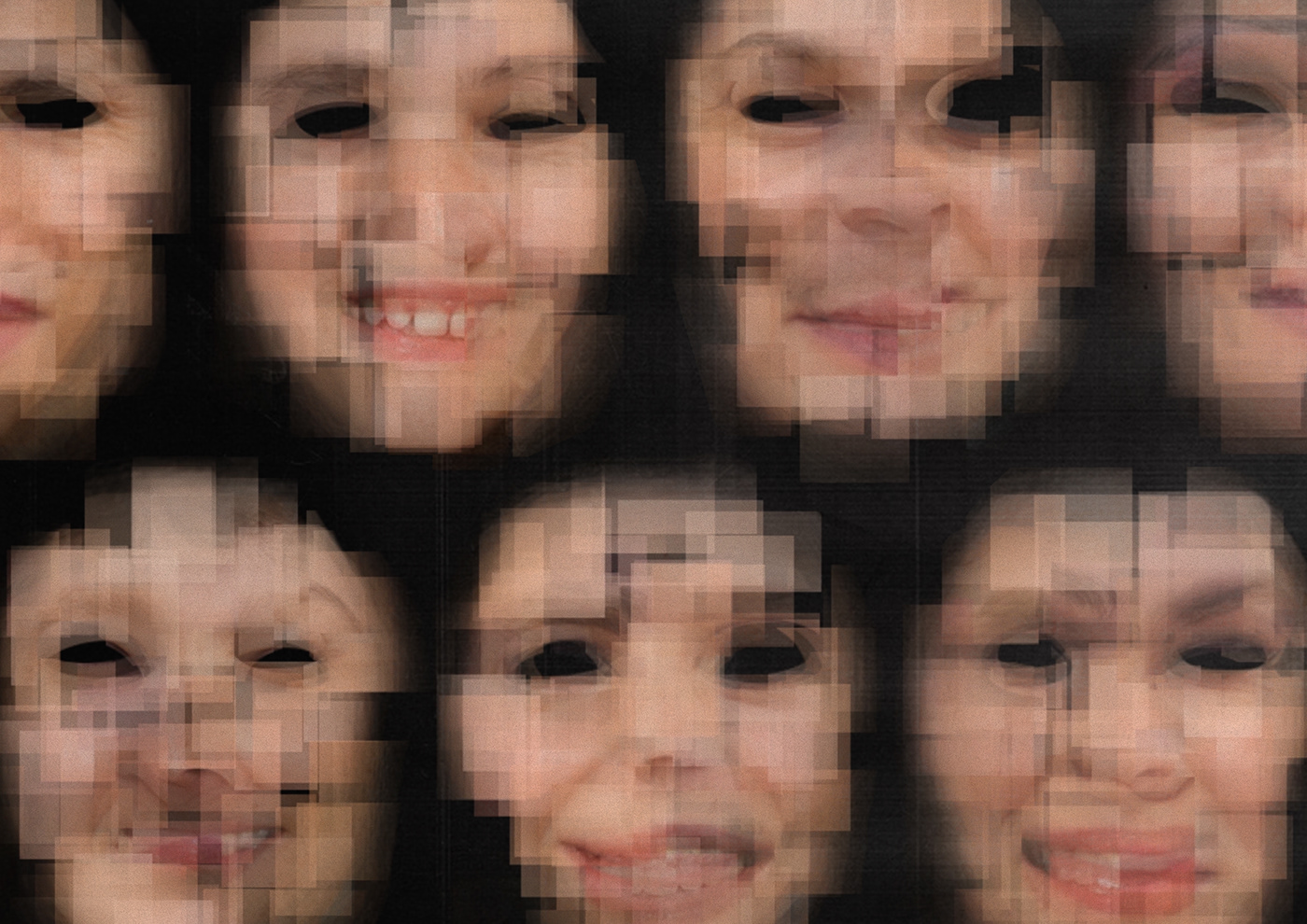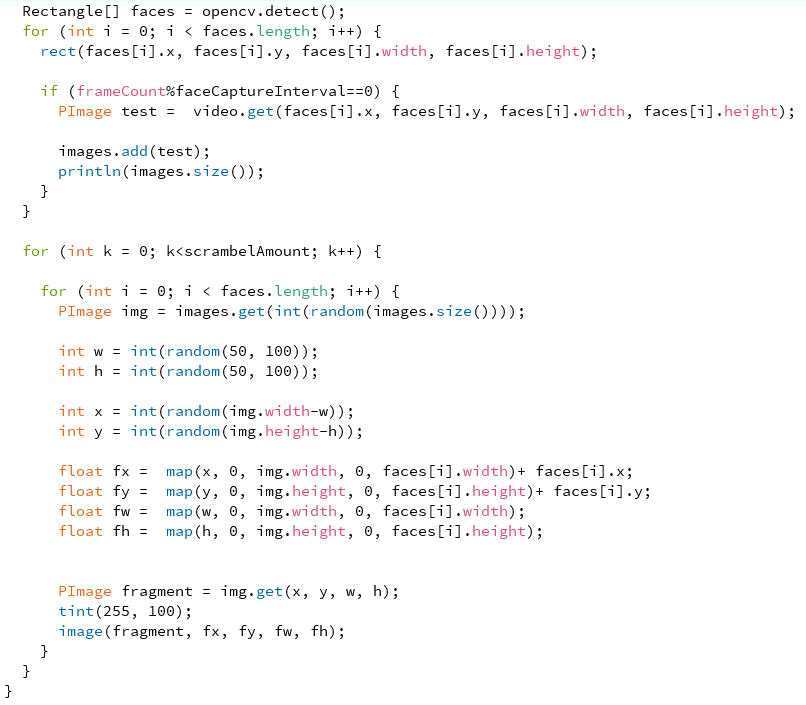
Computation & Materiality Research Elective 2019
by Pieter-Jan Monserez, Bengüsu Cebeci, Didier El-Bacha, Cagatay Erbas
lecturer: Corneel Cannaerts, Faculty of Architecture KU Leuven
this project was made using an open-source programming language called ''Processing''
by Pieter-Jan Monserez, Bengüsu Cebeci, Didier El-Bacha, Cagatay Erbas
lecturer: Corneel Cannaerts, Faculty of Architecture KU Leuven
this project was made using an open-source programming language called ''Processing''
People Scrambler
People Scrambler is an interactive installation which uses webcam as a tool to capture peoples faces, store and use them as an input data. By patching small pieces from different faces it generates a live mask with a scramble effect so the interacting person’s face cannot be recognized anymore.
The code works with different stages;
1. Using opencv to track the scale and the x, y position of a face or multiple faces within the frame.
2. Capturing the detected faces and storing them on the computer temporarily. Note that in this process only a certain amount of pictures are stored in the data string. However the pictures can be edited or deleted later on.
3. Collecting multiple faces and scrambling them to get a new re-mixed face by taking random sections from the stored faces and combine them as a newly created face.
4. Creating a scrambled face effect by patching and gathering different pieces from stored faces on top of your face. The end result is always changing depending on how many faces are visible within the frame and how long they stay.
People Scrambler is an interactive installation which uses webcam as a tool to capture peoples faces, store and use them as an input data. By patching small pieces from different faces it generates a live mask with a scramble effect so the interacting person’s face cannot be recognized anymore.
The code works with different stages;
1. Using opencv to track the scale and the x, y position of a face or multiple faces within the frame.
2. Capturing the detected faces and storing them on the computer temporarily. Note that in this process only a certain amount of pictures are stored in the data string. However the pictures can be edited or deleted later on.
3. Collecting multiple faces and scrambling them to get a new re-mixed face by taking random sections from the stored faces and combine them as a newly created face.
4. Creating a scrambled face effect by patching and gathering different pieces from stored faces on top of your face. The end result is always changing depending on how many faces are visible within the frame and how long they stay.







Below is the previous version of the final code. It uses a database of faces generated by AI and through and creates a collection with array list on Processing. Then with the PImage and mapping tools, it gets different parts from the faces and creates a mixed face which is not recognizable.

